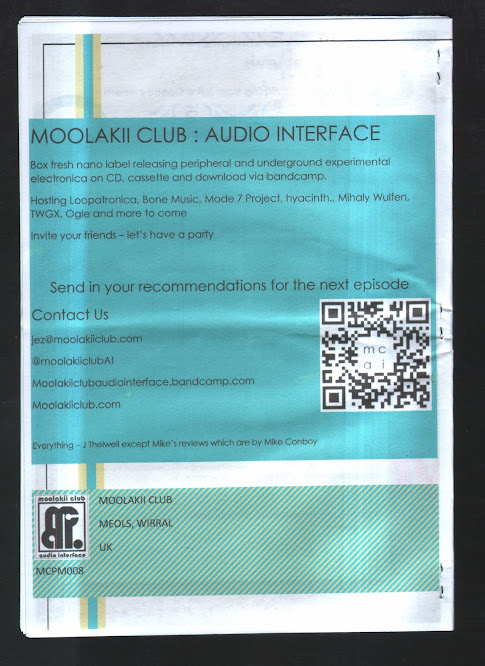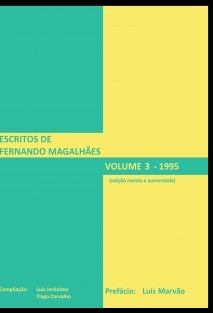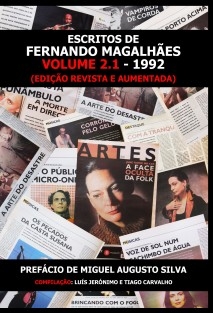CAPA:
HIGH
BIAS
Marc
Masters
The
Distorted History Of The Cassette Tape
UNC
PRESS
CONTRACAPA:
MUSIC
“Tapeheads
rejoice! Marc Masters has crafted a joyous but detailed history of the
cassette, as quirky and personal as the mixtapes you used to make!2
- PATTON
OSWALT, comedian and actor
“In this
deliciously deep dive that spans from the birth of hip-hop do Deadhead show
tapers to the Japanese underground, Masters reveals why cassettes continue to
endure deftly illuminating earlier analog eras and the very digital now.”
-
JESSICA HOPPER, author of The First Collection of Criticism by a Living Female
Rock Critic and Night Moves
“Who
knew that the oft-disparaged cassette was responsible for literally bringing
the world together? Marc Masters knew, and he does an astounding job tying
endless threads into a story that is entertaining, surprising, and ultimately
inspiring, showing us all how the cassette tape changed the culture time and
time again.”
- TOM
SCHARPLING, author and host of The Best Show with Tom Scharpling
The
cassette tape was revolutionary. Cheap, portable, and reusable, this small
plastic rectangle changed the music history. Make your own tapes! Trade them
with friends! Tape over the ones you don’t like! The cassette tape upended pop
culture, creating movements and uniting communities.
This
entertaining book charts the journey of the cassette from its invention in the
early 1960s to its Walkman-led domination in the 80s to its Decline at the
birth of compact discs to its resurgence among independent music makers.
Scorned by the record industry for “killing music,” the cassette tape rippled
through scenes corporations couldn’t control. For so many, tapes meant freedom
– to create, to invent, to connect.
Mar
Masters introduces readers to the tape artists who thrive underground; concert
tapers who trade bootlegs; mixtape makers who send messages with cassettes;
tape hunters who rescue forgotten sounds; and today’s labels that reject
streaming and sell music on cassette. Their stories celebrate the cassette tape
as dangerous, vital, and radical.
MARC
MASTERS is a music journalist whose work has appeared in the Washington Post,
Pitchfork, Bandcamp Daily, NPR Music, and Rolling Stone. He is the author of No
Wave.
NC
THE
UNIVERSITY OF NORTH CAROLINA PRESS
WWW.UNCPRESS.ORG
ISBN
978-1-4696-7598-5
PRINTED
IN U.S.A.
© 2023
Marc Masters
All
rights reserved
Designed
by Lindsay Starr
Set in
Miller and Market Pro
By
codeMantra
Manufactured
in the United States of America
Library
of Congress Cataloging.in-Publication Data
Names:
Masters, Marc, author.
Title:
High Bias: the distorted history of the cassette tape / Marc Masters
Description:
Chapel Hill: The University of North Carolina Press
[2023] |
Includes bibliographical references and index
Identifiers:
LCCN 2023008284 | ISBN 9781469675985 (paperback) | ISBN 9781469675992 (ebook)
Subjects:
LCSH: Audiocassettes – Social aspects. | Music – History and Criticism
Classification:
LCC TK7881.6.M37 2023 |
DDC
621.389/324-dc23/eng/20230302
LC
record available at https://lccn.loc.gov/2023008284
Dedicated
to the memory of Eric Didul, 1968-1990
Índice /
Contents
Introduction
– 1
Chapter
One – Killing Music – The Rise Of The Cassette Tape – 5
Chapter
Two – Creating Music – How Cassettes Helped Launch Movements – 33
Chapter
Three – Cassettes Underground – An International Network of Tape Artists – 61
Chapter
Four – The Tape Traders – Recording And Sharing Live Music On Cassette – 85
Chapter
Five – The Tape Hunters – Traveling The Globe To Unearth History On Cassette –
111
Chapter
Six – The Tape Makers – The Culture Of Personal Mixtapes – 133
Chapter
Seven – Tape’s Not Dead – The Cassette Comeback – 151
Acknowledgemnts
– 175
Bibliography
– 177
Index –
197
INTRODUCTION
Making,
listening to, and caring for cassettes is the most hands-on and personal music
listening experience. For sure. You don´t just listen; you’re very involved.
- Adam
Horovitz, Beastie Boys
There
are two things I remember well about my initial week of college. First, right
after our inaugural dorm meeting in which we were warned about the dangers of
alcohol, one of my dormmates started handling out cans of cheap beer. Second, a
guy across the hall from me who would become my friend, Glen Springer, asked if
I wanted a copy of a mixtape someone back home had given him called Toxic
Tunes. I found the latter offer far more exciting.
Toxic
Tunes was filled with songs by weird punk bands I had read about in high school
but never actually heard. Where I grew up, it took an hour to drive to the
closest record store, and that store certainly wouldn’t have sold anything that
was on this mixtape. Just the group names and song titles by themselves sounded
illicit. Dead Kennedys, the Meatmen, Butthole Surfers. “Too Drunk To Fuck,”
“Tooling For Anus,” “Bar-B-Q Pope.”
But
then, cassettes had always felt a bit forbidden. When I started listening to
music as a kid, buying a vinyl record album was approved, official, what you did
if you wanted to hear something. Then I found out about tapes. Could I really
copy albums from friends instead? Could I really put different songs from
different records onto the same tape? Could I really dub one tape onto another?
It all felt so down and dirty, so private yet so cool to share. And once I got
to college, sometimes it seemed like making tapes was all I did.
Wouldn’t
you really rather have a cassette than a record anyway? Cassettes don’t
scratch, they fit in your pocket, they’re marvelously portable (home, car,
friend’s home, friend’s car), and they stack up nice and neat. They also cost
less.
- R. Stevie Moore, from his R. Stevie Moore
Cassette
Club catalog
The
cassette tape is revolutionary. It’s small, it’s cheap, it’s easy to use. It’s
not necessarily more foolproof than a record – in fact you can screw it up even
worse, and it can even just screw up on its own. But when a record gets
scratched, it sounds annoying. When a tape warbles or flutters or wrinkles, it
sounds… kind of cool? It makes you think, what if other music sounded that way?
What if my music sounded that way? And you can fix a lot of tape problems
yourself without knowing much about what you’re doing. It has screws you can
unscrew, spools you can wind with a pencil. You can even fix breaks in the tape
– with tape! And you can always buy more blanks if the ones you have fail.
Tapes
can go wherever you go. They can get lost at the bottom of your backpack. Huge
sprawling piles of them can gather on the floor of your car. They can become
orphaned from their cases and replaced by something that then, for some reason,
never makes it back to its original home. They can shine from racks on your
wall, their thick spines beaming the colors of handwritten titles toward you
like light beckoning a moth.
The cassette
tape is an audio medium that everyone can access and control and modify and
remake and destroy and resurrect. It’s an audio medium that was actually made
for everyone. That’s pretty revolutionary.
Cassettes
are one-to-one. That’s the populist way. “Here’s a tape.” And you could just
make the tape. So it was the people’s format.
- Ian
MacKaye, Fugazi / Minor Threat / Dischord Records
The
cassette tape is a way people can talk to one another. Its uses and benefits
and anomalies form a language – one that often brings another language with it,
music. A mixtape you make for someone can be a code, a message, a signal, a
conversation. Music you create and record on cassette can be a missive, a
statement, a movement, a plea for attention. What you capture on cassette –
concerts, songs from the radio, random noises – can become your hobby, your
personality, your reputation. Sounds realign magnetic particles on a tape, and
when you associate one sound with another because you put them together on a
tape you liste to over and over, the tape realigns your brain.
Cassette
tapes are personal, amateur, and subjective. They don’t exist if someone
doesn´t hear them, and everyone hears them differently. They are for individual
use and collective exchange. They have built communities, connected like-minded
people over long distances, and passed along local and regional styles and
innovations when no other means or medium would or could. They are
do-it-ourselves. One person does something by themselves on tape, and soon
enough a bunch of people are doing it by themselves, together.
It’s
sloppy, it’s dirty, it’s marked the way the human body is marked, by the space
and time it passes through. It wears those scars and those scuffs, and that
becomes part of why you love the tape.
- Rob
Sheffield, from Cassette: A Documentary Mixtape
The
cassette tape is imperfect. It degrades, it tangles, it adds noise, it adds
hiss. It puts a smudgy fingerprint on everything it touches, and everything
that touches it does the same. It eventually dies, though it often lasts longer
than you expect.
For
anyone who loves cassette tapes, its mechanics are magical. The way the case
swings on a hinge like a miniature book, so satisfying to open and close. The
way the cover, or J-card, folds into halves and thirds, with layers begging to
be opened and perused. The way the outer shell protecting the tape is so
smooth, molded, symmetrical. The way you can peek into the tiny window and
watch the tape work, spooling forward and backward, or just let it still,
waiting to be played, holding sound between its layers. The way the cassette
tape fits about is perfectly as any object could in the palm of your hand.
Tape has
its own narrative, its own way of structuring narrative… and this is a
narration intimately caught up with human belief in life as an accumulative
narrative.
- Paul
Hegarty, “The Hallucinatory Life Of Tape”
Cassette
tapes are analog. They don´t replicate sound exactly as it is. They distort it,
and the more you copy them, the more distorted the sounds become. The story of
the cassette tape is distorted too. You can sketch out a map of its journey,
but the textures, the hills and valleys, depend on which trails you follow.
Perhaps that’s true of anything, but it’s especially true of a format so
customizable, so intimate and social and surreptitious. The cassette tape has
meant so much to so many that its history is as diverse as the innumerable
people whose lives it has altered.
What
follows is a version of that history, tracing both how the cassette tape
emerged – as a technological development, a marketed product, a cultural icon –
and how things changed because of the cassette tape. It’s a winding, messy path
trough international commerce, far-flung musical movements, covert underground
cultures, and most important, intimate connections between people obsessed with
their own ways of using and sharing cassette tapes.
In the
technical lingo of cassette tapes, “high bias” means high quality. The higher
the bias, the better the sound. The story of the cassette tape has bias, too.
Every person who encounters a tape adds something to that story, whether by
listening to it, recording over it, or passing it on. That’s why this story is
still going – because every cassette tape offers a chance to do something new.
If a
record sucks, it sucks. If a tape sucks, you can put something better on it.
- Mike
Haley, Tabs Out cassette podcast


























_Bubok.jpg)




















